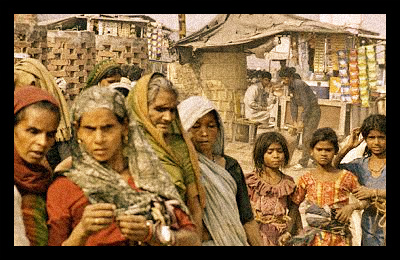Four Facts About India That Will Surprise You

What do you really know about India? Maybe that it just celebrated its 66th year of independence from British rule on August 15th. Or that the famed, and often revered, Mahatma Ghandi was Indian. Here are some more facts about India that may really surprise you.
- In 1947, the Indian rupee (re) was equal in worth to the American dollar. Sixty-seven years later one dollar is the same as 61.43 rupees. Renting a three bedroom apartment in the middle of a city in India would cost an average of 24,000 Re, or about $390 a month. Comparatively, the median disposable income is listed as 25,000 a month, which is only $400. Simply, the cost of living and the wages people actually make just do not add up.
- With over 450,000,000 people living in extreme poverty, or under $1.25 a day, India is home to 42% of the world’s poor. According to the World Bank, even those who have made it out of poverty status are still very likely to fall back into it due to a lack of infrastructure to support the growing population. One in three people living in rural areas lack access to a reliable road and 40% of the world’s malnourished children are living in India. In fact, in many Indian states, infant and maternal mortality rates are on par with the world’s poorest countries despite the World Bank’s official designation of the country as “lower-middle class.”
- Up to 25% of the new workers in the world will be Indian. While the percentage of children under 14 is dropping, the number of people within the working ages of 15 and 59 is increasing. It is expected that the work force in India will be 653 million by 2031, a fact about India that may be marred by the problematic education system in the country. The problem becomes not whether they will possess enough people to fill job openings, but one of whether India will be able to use all these people effectively to bring the country out of declining poverty or if it will continue to perpetuate the cycle of poverty.
- Around 10 million female births have gone missing in the last twenty years as a result of illegal sex selection. In India only male children are allowed to care for aging parents and must be the ones to perform the last rites at their deaths. They also receive more education and make more money. Daughters must be cared for, given away into marriage, and then a dowry is usually paid to the parents of the groom. Even though sex-selection and dowrys are both illegal, the old customs still prevail. This leaves India with a massive gender ratio problem as well as serious issues with pervasive gender inequality.
While none of these facts about India is pleasant, each reveals the reality of what the people are currently facing and what they might have to deal with in the years to come. A lot of work will have to be put in to effectively change these statistics and realities, but the right focus and effort could make all the difference.
– Chelsea Evans
Sources: Business Insider, World Bank, The Hindu, Boston Globe, PBS, Numbeo, Business Standard
